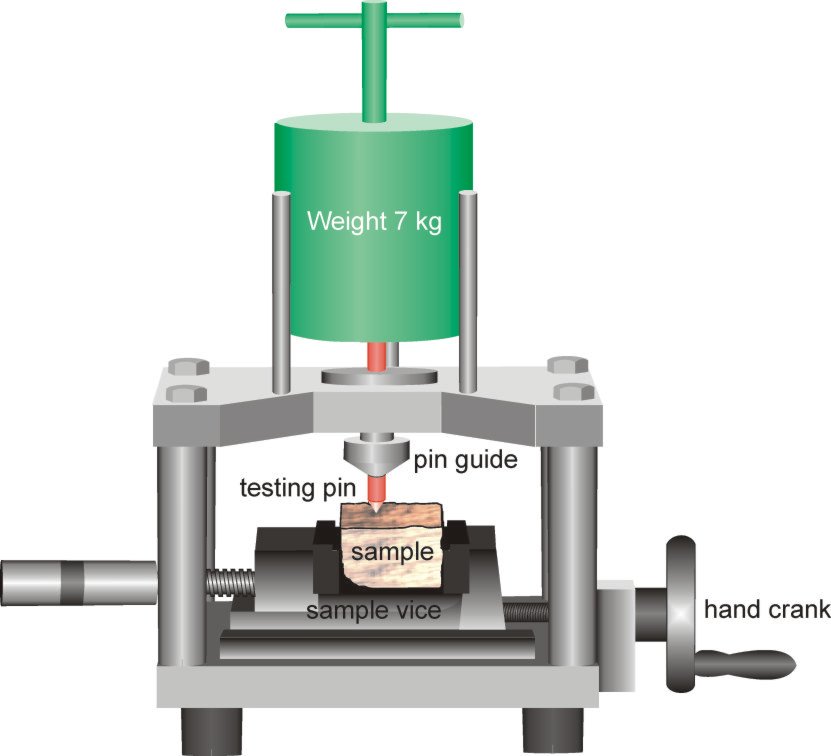Concept
The abrasivity of rock and soil is a factor of significant importance for excavation in tunnelling, underground construction, mining or quarrying. Abraison can be defined as wearing or tearing away of particles and material from the solid surface. The CERCHAR abrasicity test is a laboratory method to quantify the rock abrasivity.It allows to determine an index called CERCHAR Abrasicity Index (CAI) for the rock's abrasivity which can be used for evaluate the wear of excavation equipment in different application such as mining, tunnelling and drilling.
The method was intially developed in 70's by the Laboratoire du Centre d'Etude et Recherches des Charbonnages (CERCHAR) de France for coal mining purposes.
Description and Procedure
Cerchar Abrasivity test equipment
The testing principle is based on a steel pin with defined geometry and hardness that is scratches the surface of a rough rock sample over a distance of 10 mm under static load of 70 N. There are two equipment design to run the test:
(i) original setup by CERCHAR (1986) [1]
(ii) setup by West (1989) [2]
In the orginal CERCHAR setup, the pin and the dead load are moved across the rock surface. While, in the West design, the rock sample moves under a stationary pin. The main difference between the two methods is in the duration of the test.
Both devices include the following main parts: 1. dead weight, 2. pin chuck 3. steel pin, 4. specimen , 5. vice, 6. hand lever (see image below).
The pin is made of a standard steel and has a 90° conical tip. It should have a diamater of at least 6 mm and the length should be such at the visibile part of th epin is at least 15 mm.
CERCHAR Abrasivity procedure
The rock sample is placed in the equipment and firmly clamped using a rigid vice. The device is rigid and also fixed to avoid any lateral movement. The dead load is then placed on the top of the pin and the pin is carefully lowered to the rock surface.
The test is then carried out by relative displacement of the pin on the rock surface across 10 mm at given time intervals. After the test, th epin is carefully removed and the tip flat wear is measured.
The Cerchar- Abrasivity-Index (CAI) is then calculated from the measured diameter of the resulting wear flat on the pin:
CAI=10d
CAI: CERCHAR Abrasivity Index
d : diamater of wear flat measured in mm to an accurancy of 0.01 mm

Standards
- ASTM D7625-10: Standard Test Method for Laboratory Determination of Abrasiveness of Rock Using the CERCHAR Method Link
- NF P94-430-1: Roches - Détermination du pouvoir abrasif d'une roche - Partie 1 : essai de rayure avec une pointe
- ISRM Suggested Method for Determining the Abrasivity of Rock by the CERCHAR Abrasivity Test Link
References - External Links
- Cerchar - Centre d´Études et des Recherches des Charbonages de France. 1986. The Cerchar abrasiveness index. Verneuil.
- West 1989. Rock abrasiveness testing for tunnelling. Int. J. Rock Mech. Min Sci. & Geomech. Abstr. 26: 321-327.
- H. Käsling, K. Thuro, 2010, Determining rock abrasivity in the laboratory, EUROCK
